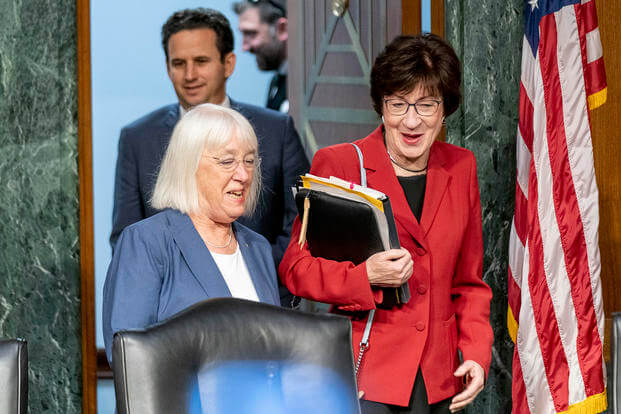

A proposed 5.5% pay raise next year for junior enlisted troops has won the backing of a key Senate panel in charge of government funding.
On Thursday morning, the Senate Appropriations Committee unanimously advanced a version of the fiscal 2025 Pentagon spending bill that includes funding to cover a 5.5% pay bump for E-1s through E-3s and a 4.5% raise for all other troops next year, according to a summary of the bill released by the committee. The full text of the $852 billion bill has not yet been released.
The bill supports plans for next year’s military pay raise advanced in June by the Senate Armed Services Committee in its annual defense policy bill, firmly pitting the Senate against the House — and its proposed 19.5% raise — as negotiations on both the policy and spending bills move forward.
“I do want to emphasize that the bill does not just focus on aircraft, ships, weapons and equipment, critical though those are. It also gives our brave, highly skilled service members the pay and benefits they deserve,” Sen. Susan Collins, R-Maine, the vice chair of the Appropriations Committee, said at Thursday’s meeting to consider the spending bill.
Committee Chair Patty Murray, D-Wash., similarly said in a statement she was “especially glad this bill provides new resources to make sure the men and women who keep our country safe can make ends meet and take care of their families as they serve our nation.”
Lawmakers in both parties and chambers of Congress have been concerned in recent years that military pay has not kept up with either inflation or the private sector, contributing to the military’s ongoing struggle with convincing young Americans to enlist.
A bipartisan House panel that spent months studying military quality-of-life issues came to the conclusion that a massive raise for junior enlisted personnel was needed to “restore real value” to military compensation.
As such, the House, in its version of the annual defense policy bill known as the National Defense Authorization Act, or NDAA, included a 19.5% raise for E-1s through E-4s. All other service members would get a 4.5% raise under the House plan.
The House’s version of the fiscal 2025 defense spending bill also included $2.5 billion that lawmakers said was intended to pay for the 19.5% raise, though the White House maintains that amount falls short of what would actually be needed.
While senators agree that military pay, especially for the lowest-ranking troops, is insufficient, they maintain they’ve been boxed in by budget caps Congress agreed to last year and so can’t approve a pay raise as high as the House is proposing. That’s despite the fact that the Senate Armed Services Committee’s NDAA busts the budget caps by $25 billion, and the Senate Appropriations Committee reached a bipartisan agreement for $21 billion in “emergency” defense funding above the caps.
The White House has come out in “strong” opposition to the House’s pay raise plan, arguing the junior enlisted pay hike is premature amid a comprehensive review of military compensation the Biden administration expects to complete by the end of the year or early next year.
The White House has not yet publicly weighed in on the Senate’s competing plan for a 5.5% raise for junior enlisted troops.
The House and Senate will have to reconcile their versions of both the NDAA and the spending bill before either can become law.
While lawmakers technically face a Sept. 30 deadline to reach an agreement on the spending bill, Congress is expected to pass a short-term spending bill that simply extends this year’s funding levels for a few weeks since little time is left on the legislative calendar before the deadline.
The House is on a summer recess until Sept. 9, and the Senate was leaving town Thursday afternoon to start its own break until the same date.
Related: Troops Will Start Getting Economic Hardship Bonuses This Month, Though Only $20 on Average
